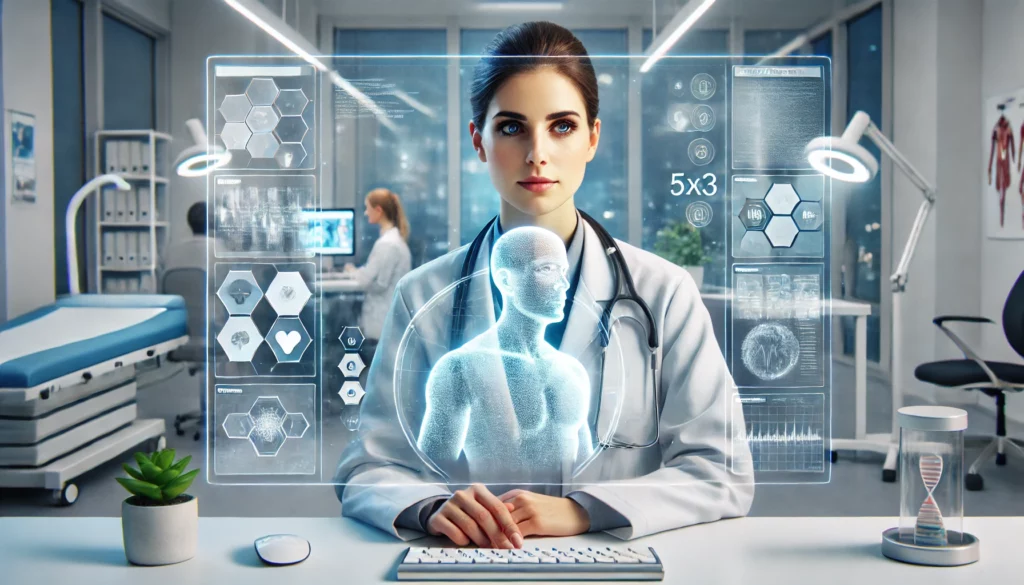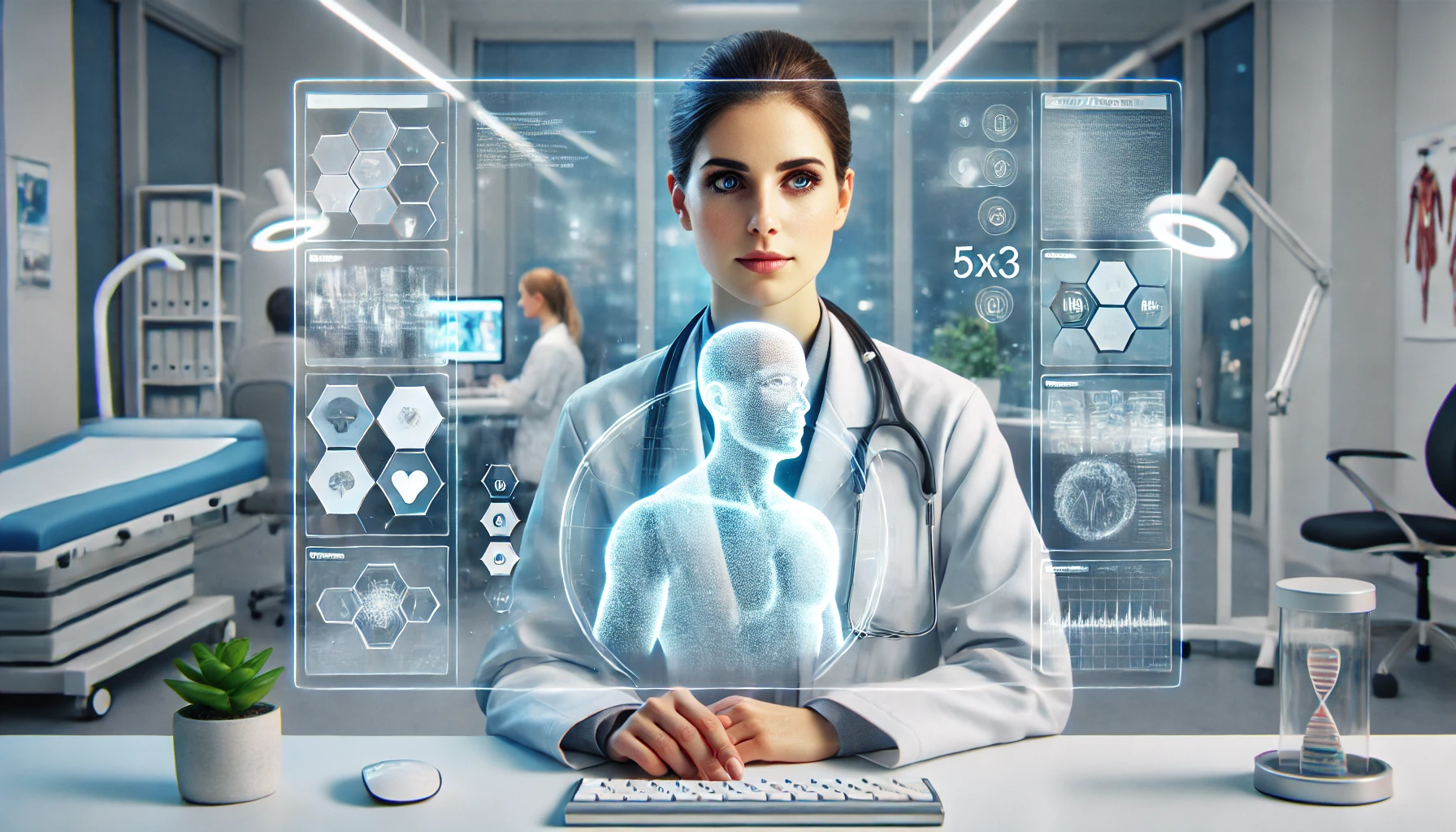Twin Doctor: A ground-breaking concept
The global healthcare system is standing at a moment of profound transformation. Faced with an escalating demand driven by an aging population and increasing chronic diseases, combined with persistent shortages of medical professionals, particularly in underserved regions, traditional care models are under strain.
While digital health solutions have offered a lifeline, their scalability often hits a ceiling due to reliance on direct human physician interaction. A ground-breaking concept, the “twin doctor,” is emerging as a powerful pathway to truly scale healthcare solutions, promising to redefine access and delivery.
An AI-Powered Replica of Empathy and Expertise
A “twin doctor” is an innovative AI-powered virtual representation designed to embody the essence of a specific human physician. Unlike generic medical chatbots, this technology aims to create a digital clone that replicates not just medical knowledge, but critically, the individual doctor’s unique voice, image, communication style, language nuances, and even their accent. The ultimate goal is to provide virtual consultations that feel remarkably akin to interacting with one’s own trusted doctor.
The methodology behind creating a twin doctor involves sophisticated AI, including advanced natural language processing (NLP), voice cloning, and machine learning. These systems are trained on vast datasets, encompassing general medical knowledge, clinical guidelines, and – crucially – a significant body of data from the specific physician being twinned. This includes their consultation transcripts (with strict patient consent and privacy safeguards), voice recordings, and observed communication patterns. Companies pioneering this field are actively working on patenting these complex methodologies, underscoring their perceived novelty and potential market impact.

The Power of Personalization: Beyond Information Delivery
The true differentiator of the twin doctor lies in its ability to replicate not just the information conveyed, but also the doctor’s characteristic communication style and, significantly, their empathy. While AI cannot possess genuine emotions, it can be engineered to simulate empathetic responses. By analyzing patient cues (linguistic, tonal) and responding with appropriate verbal and non-verbal expressions, the twin doctor aims to foster a sense of understanding, reassurance, and rapport.
This simulated empathy and personalized communication are not mere cosmetic features; they are critical for improving patient outcomes. A strong therapeutic alliance – the collaborative and affective bond between patient and clinician – is a well-established predictor of patient compliance and positive health outcomes. When patients feel heard, understood, and connected, they are more likely to adhere to treatment plans, engage actively in their care, and openly discuss their health concerns.
By mirroring the human doctor’s trusted approach, the twin doctor seeks to build and maintain this crucial alliance even in a virtual environment. This focus on replicating the nuances of human interaction, rather than just delivering facts, is what is expected to be a significant market differentiator in the digital health space.
Scaling Care, Freeing Doctors, and Continuous Improvement
The most immediate and transformative benefit of twin doctors is their potential to address the global physician shortage. By handling a large volume of routine inquiries, medication follow-ups, and informational consultations, twin doctors can significantly augment a human physician’s capacity. This frees up human doctors to focus on complex diagnoses, critical procedures, and in-person care that demand their unique judgment, physical presence, and complex interpersonal skills. This parallel care delivery model promises to dramatically increase healthcare accessibility and efficiency, providing 24/7 support and extending expert advice to remote or underserved populations.
Furthermore, the machine learning models underpinning twin doctors are designed for continuous improvement. Depending on the specific architecture, the AI can learn and refine its responses and interactive patterns from ongoing interactions:
- Learning from Actual Doctors: By processing new data from the human physician it represents, the AI can absorb refined communication techniques, updated medical insights, and even subtle nuances in patient management.
- Patient Feedback: Feedback from patients on their interactions with the twin doctor can be used to refine the AI’s empathetic responses and clarity of communication.
- New Medical Knowledge: The twin doctor’s knowledge base can be continuously updated with the latest medical research, clinical trials, and treatment guidelines, ensuring it provides current and accurate information.
This iterative learning process ensures that the twin doctor remains relevant, accurate, and increasingly sophisticated in its interactions.
The Road Ahead: Integration and Ethical Considerations
While the concept of twin doctors holds immense promise, its full realization requires careful navigation of significant challenges. Ethical considerations surrounding data privacy, security, and accountability are paramount. Robust frameworks must be in place to protect sensitive patient and physician data, and clear guidelines are needed to address issues of liability in a clinical context. Bias prevention in AI models is also crucial to ensure equitable care delivery.
The twin doctor is not intended to replace human physicians, but rather to serve as a powerful augmentative tool, allowing healthcare systems to deliver more personalized, accessible, and empathetic care at an unprecedented scale. As technology advances and regulatory frameworks evolve, twin doctors are poised to become an integral, transformative force in the future of digital healthcare.
Join ThePlatform to have full access to all analysis and content: https://www.theplatform.finance/registration/
Disclaimer: https://www.theplatform.finance/website-disclaimer/




